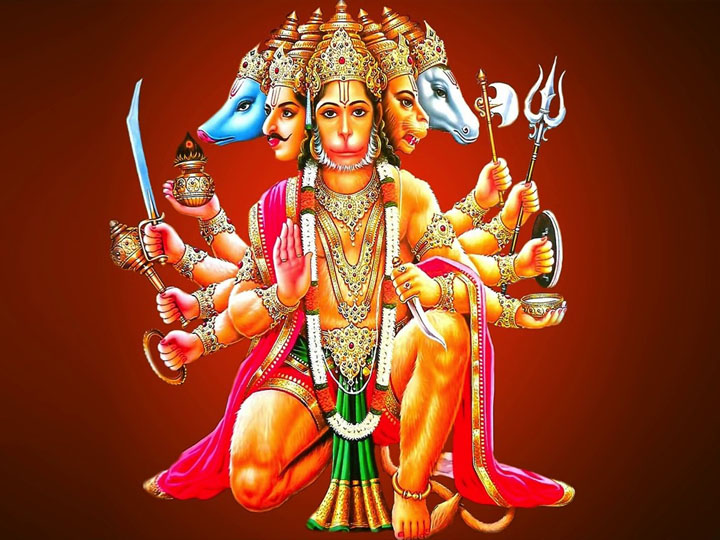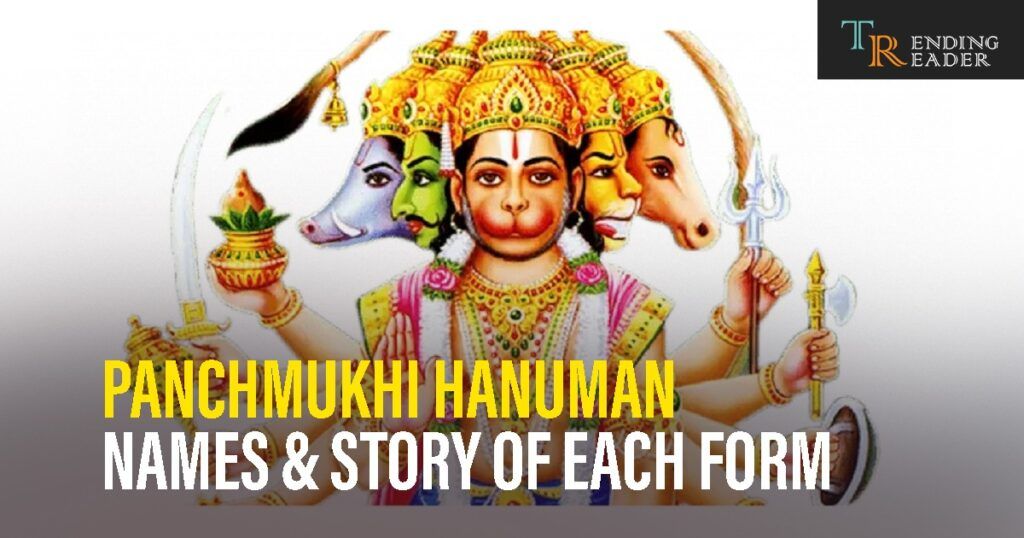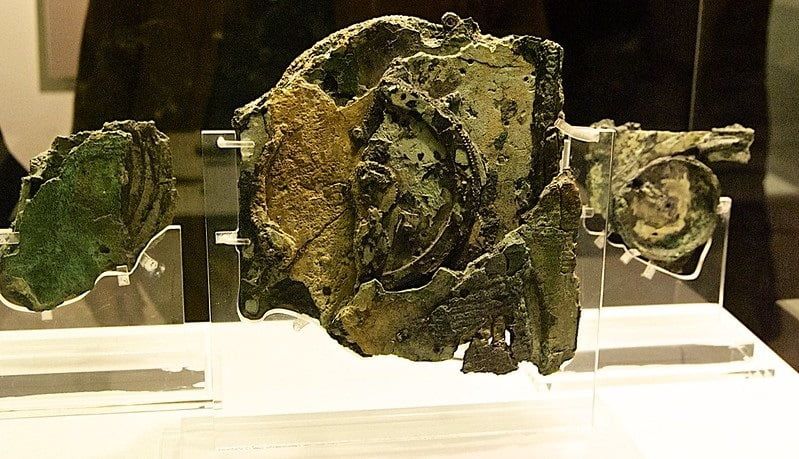Shri Panchmukhi Hanuman’s origins may be traced back to a Ramayan narrative. In this article, we will know what are the Panchmukhi Hanuman Names along with the significance, and story of Panchmukhi Hanuman.
Story Behind Panchmukhi Hanuman Names
Ravan enlisted the aid of Ahiravan, the king of Patal, during the fight between Lord Ram and Ravan. Lord Hanuman used his tail to create a castle to defend Lord Ram and Lakshman. Ahiravan disguised himself as Vibhishan, Ravan’s aristocratic brother, and led Lord Ram and Lakshman to Paataal look.
Hanuman entered Patal lok in pursuit of Ram and Lakshman and discovered that Ahiravan’s life was concealed in the five lights that were set in various directions and could only be slain if all five lamps were extinguished at the same time. Hanuman had to adopt the shape of Panchmukhi Hanuman to accomplish this. Along with Hanuman’s face, this form of Hanuman has four more faces: Hayagriv, Narsimha, Garud, and Varaha.

The Five Panchmukhi Hanuman Names
1. Hanuman
Hanuman is frequently described as a yogi. Hanuman used his five faces to blow air in different directions, extinguishing the lights and killing Ahiravan.
2. Varaha
Varaha is well known for the mythology of pulling the Earth (personified as the goddess Bhudevi) from the cosmic ocean. Vishnu arrived as Varaha to save the world after the demon Hiranyaksha kidnapped her and hid her in the primordial seas. Varaha defeated the monster and lifted the Earth from the sea with his tusks, restoring Bhudevi to her rightful position in the world.
Varaha might be represented as a full-fledged pig or as an anthropomorphic hog with a human body. Bhudevi, the earth, is sometimes represented as a young woman being raised by Varaha.
3. Garuda
Lord Hari Narayan rides in the vehicle of Pakshiraj Garun dev. Garuda is the king of birds and has a kite-like appearance. He is shown as a zoomorphic (giant bird with partially extended wings) or anthropomorphic (humanoid) form (man with wings and some bird features). Garuda is a guardian who has the ability to go quickly to any location, is always on the lookout, and is an opponent of the snake. Tarkshya and Vynateya are two more names for him.
4. Narasimha
Narasimha is a powerful incarnation of the Hindu deity Vishnu who incarnates as a half-lion, half-man to conquer evil, stop religious persecution, and catastrophe on Earth, and thereby restore Dharma. He’s well known for assassinating Hiran Kashyap.
5. Hayagriva
Lord Hayagriva is Lord Vishnu’s incarnation in Hinduism. He is revered as the deity of learning and knowledge, with a human body and a horse’s head, bright white skin, white clothing, and reclining on a white lotus. Symbolically, the narrative depicts pure wisdom triumphing over the evil powers of passion and darkness, guided by God’s hand.
Significance Of Panchamukhi Hanuman’s Different Faces
1. Sri Anjaneyaswami Mukha
The face to the East is “Sri Anjaneyaswami Mukha,” which purifies the mind and eliminates the blemishes of sin.
2. Sri Marasimhaswami Mukha
“Sri Marasimhaswami’s” south-facing Mukha reduces foes’ dread and grants victory.
“Sri Mahaviragarudaswami’s” West facing Mukha chases away evil curses, black magic influences, and all harmful effects on one’s body.
3. Sri Lakshmi Varahamurthyswami Mukha
The north-facing Mukha of “Sri Lakshmi Varahamurthyswami” protects against adverse planetary effects and bestows all wealth. Aishwarya Rai Bachchan, Ashta Aishwarya Rai Bachchan, Asht.
4. Sri Hayagreevaswami Mukha
“Sri Hayagreevaswami’s” upward-looking visage bestows wisdom, triumph, offspring, and Mukthi.
Also Read – Hanuman Ji Birth: True Story Of The Birth Of Bajrang Bali
Other Interpretations
In his siddhis, Lord Hanuman is said to have attained perfection and mastery over his five senses (Pancha Indriyas). This is one of many possible meanings for the number five. In Ramavataaram, the Tamil version of Ramayana, the famed Tamil poet Kambar has highlighted the significance of the number five, among other variants.
According to legend, he worshiped Lord Ram in five different ways:
- Naman: Invoking the Lord’s name
- Smaran: Constant recollection is important.
- Keerthanam: Praise and adoration singing
- Yachnam: A heartfelt, altruistic appeal for greater faith.
- Arpanam: It is a Sanskrit word that means “self-offering” or “surrender.”
How To Worship Panchmukhi Hanuman?
Devotees utilize Hanuman Kavach to worship the five-headed Hanuman. If you’re putting up a Panchmukhi Hanuman statue at home, you can pray to Maruti Nandana using Hanuman Kavach. There are several advantages to having a five-faced Hanuman statue in your house. It defends you from evil and negative influences, dispels fear, and eliminates Vastu doshas.
People either adorn Panchmukhi Hanuman Kavach as a necklace or display it in their homes as a picture or photograph.
Also Read – 11 Chiranjivis – The Immortals In Hindu Mythology
Can We Keep Pictures Of Panchmukhi Hanuman In Our Homes?
It is said that maintaining a picture of Panchmukhi Hanuman in the home removes evil energy and ensures that the household is free of problems. It also aids in obtaining the blessings of Goddess Lakshmi. An image of Panchmukhi Hanuman should be displayed at the front of your home.
Conclusion
“He who acts for me, who is engaged in me, who is my believer, who is free from attachments, he reaches me,” Lord Krishna remarked to Arjun in the Bhagavad Gita. Hanuman possesses all five of these attributes. Each of his five heavenly qualities is represented by one of his faces.
Fearlessness comes to devotees who worship this avatar of Hanumanji on a daily basis. Mental stress is relieved, and self-confidence grows. Sit in front of a portrait or statue of this shape and light a lamp while reciting Hanuman Chalisa (Diya).
For more related information, visit Discover – Trending Reader












